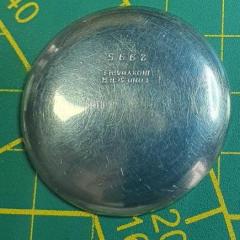ST36 hairspring attachment to stud weird
-
Recently Browsing
- No registered users viewing this page.
-
Topics
-
Posts
-
You could make a guide/jig. Cut a slot in a piece of metal approx the same thickness as the screw head, then drill a hole (screw head diameter) in that slot.
-
Sorry @nickelsilver, I'm just seeing this now. It is a standard metric screw plate. I followed the suggestion of doing the thread cutting in a pin vise. It took me forever because the piece is so delicate that I cut and cleared chips very frequently. But eventually I did get it. Not pretty, but I got it; the first thing I ever successfully made on the lathe. I cut the screw slot with a jewelers saw. How can I ensure that the slot is centered on the screw head?
-







Recommended Posts